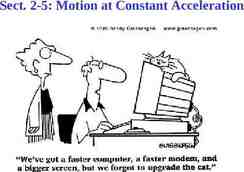MOVEMENT ANALYSIS Levers Levers are seen in everyday life as well as
15 Slides1.29 MB

MOVEMENT ANALYSIS Levers Levers are seen in everyday life as well as in sport and exercise. A level system is a rigid bar that moves around a fixed fulcrum with two forces applied to it. Levers can change the size or direction of the effort used to make a task more manageable.

Lever: A rigid bar or object that moves around a fixed fulcrum with two forces applied to it. Fulcrum: A fixed pivot point. For example, a joint in the body. Effort: The source of the energy. For example, a joint in the body. Resistance: The weight/resistance to be moved. For example, a body part plus anything held or resistance met. KEY TERMS

The position of the fulcrum, resistance and effort will determine which class lever it is. In the human body the muscluo-skeletal system creates levers around every joint. These allow us to move. The joint acts as the fulcrum, effort comes from contracting muscles and the resistances the body part being moved, plus any additional objects held or resistance met. The body contains all classes of levers, but 3rd class levers are the most common. Three classes of lever

Class of lever First class lever Second class lever Third class lever Lever drawing Well-known example for you to remember easily Best example in the body

First Class lever: The fulcrum lies between the effort and resistance Second class lever: The resistance is between the fulcrum and effort Third Class Lever: The effort is between the fulcrum and the resistance. KEY TERMS

There are two main benefits of the lever system Large loads can be moved with a relatively small amount of effort The distance a resistance can be moved, or the speed with which it can be moved, can be increased without an increase in effort. THE BENEFITS OF DIFFERENT LEVERS

Working out the benefit of a particular lever, you need to look at the length of two arms. The distance from the resistance to the fulcrum is known as the resistance arm while the distance from the effort to the fulcrum is known as the effort arm.

When a levers effort arm is longer than its resistance arm it is said to have mechanical advantage. Levers with mechanical advantage can move large loads with a relatively small amount of effort. They have a high resistance force to effort ratio. Second class levers always have mechanical advantage. MECHANICAL ADVANTAGE

A levers mechanical advantage or disadvantage all depends on the length of the force arm and the resistance arm. The force arm is the name given to the shortest perpendicular distance between the fulcrum and the application of force (effort). The resistance arm is the shortest perpendicular distance between the fulcrum and the resistance. Perpendicular distance is simply the length of the line between either where the fulcrum and the resistance is labelled or the fulcrum and effort is labelled. If we consider a long jumper taking off, we see how the second class lever, where the foot contacts the ground, has a high mechanical advantage because the effort arm is longer than the resistance arm. The result of this, for the long jumper, is that the force produced by the muscles, which is relatively small, is able to drive the full weight of the athlete off the ground.

With first class levers, the position of the fulcrum is key. If the fulcrum is closer to the load, then relatively low effort will result in larger, more powerful movements at the resistance end; there will be mechanical advantage. If the fulcrum is closer to the effort, then the lever will operate at mechanical disadvantage but will produce a larger range of movement at the end of the lever and greater speed as a result FIRST CLASS LEVERS: MECHANICAL ADVANTAGE AND DISADVANTAGE

Mechanical disadvantage is when the resistance arm is greater than the force arm. This means that the lever system cannot move as heavy a resistance but can do it faster. It also has a larger range of movement. MECHANICAL DISADVANTAGE

When a levers resistance arm is longer than its effort arm, it is said to be at a mechanical disadvantage. It has a low resistance force to effort ratio. Third class levers always have mechanical disadvantages. MECHANICAL DISADVANTAGE BREAK DOWN

Despite operating at mechanical disadvantage, third class levers are able to increase the distance covered an, therefore, the speed at the end of a lever arm. They can produce a large range of movement with relatively low effort. MECHANICAL DISADVANTAGE BREAK DOWN

The hip joint is a 3rd class lever. It cannot produce the same resistance force to effort ratio as a 2nd class lever. However, this doesn’t mean that it is not good at what it does. Third class levers can take small movements near the fulcrum and make a large movement where the resistances. This provides a relatively large range of movement, which results in relatively high speed being produced. MECHANICAL DISADVANTAGE BREAK DOWN

First Class Lever SPORTS EXAMPLES OF LEVERS Second Class Lever Third Class Lever






